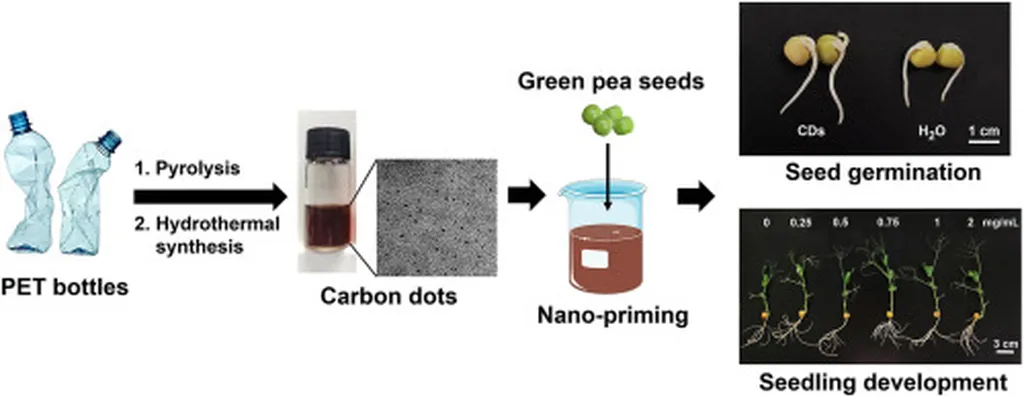In a groundbreaking study published in *Results in Surfaces and Interfaces*, researchers have unveiled a novel approach to synthesizing carbon dots (CDs) using a time-dependent hydrothermal method, with promising implications for agricultural applications. The research, led by N.J. Simi from the Department of Physics at Newman College in Thodupuzha, India, explores how varying reaction times during the synthesis process can significantly influence the optical and structural properties of CDs, ultimately enhancing seed germination and plant growth.
Carbon dots, known for their low toxicity, high biocompatibility, and excellent aqueous solubility, have emerged as a promising fluorescent material in various fields. The study utilized Myxopyrum smilacifolium leaves as a carbon precursor to produce water-soluble CDs through a one-pot hydrothermal technique. By systematically altering the synthesis conditions, the researchers investigated the impact of reaction time on the CDs’ properties.
The findings revealed that as the reaction time increased, the photoluminescence emission of the CDs exhibited a blue shift, attributed to changes in their morphological and optical properties. Dynamic light scattering (DLS) analysis provided insights into the size distribution of the CDs under different synthesis conditions, while Fourier Transform Infrared (FT-IR) spectroscopy confirmed the presence of hydroxyl and amine functional groups on their surface.
The most compelling aspect of this research is its potential to revolutionize agricultural biotechnology. The synthesized CDs were tested on mung bean seeds, demonstrating a significant improvement in germination rates and seedling development. “The impact of these CDs on plant growth is remarkable,” said lead author N.J. Simi. “This opens up new avenues for sustainable nanomaterials in agriculture, offering a green and efficient solution to enhance crop yields.”
The commercial implications of this research are substantial. As the global population continues to grow, the demand for sustainable and efficient agricultural practices is more pressing than ever. The use of CDs synthesized through this hydrothermal method could provide a cost-effective and environmentally friendly way to boost plant growth, ultimately increasing food production and security.
Moreover, the study’s findings could pave the way for further research into the applications of CDs in other areas of agriculture, such as soil health monitoring and pest control. The versatility of these nanomaterials makes them a valuable tool in the quest for sustainable agricultural solutions.
As the world grapples with the challenges of climate change and food security, innovations like this one offer a glimmer of hope. The research led by N.J. Simi and published in *Results in Surfaces and Interfaces* not only advances our understanding of carbon dots but also highlights their potential to transform the agricultural sector. The future of farming may well lie in the tiny, fluorescent world of nanomaterials.

